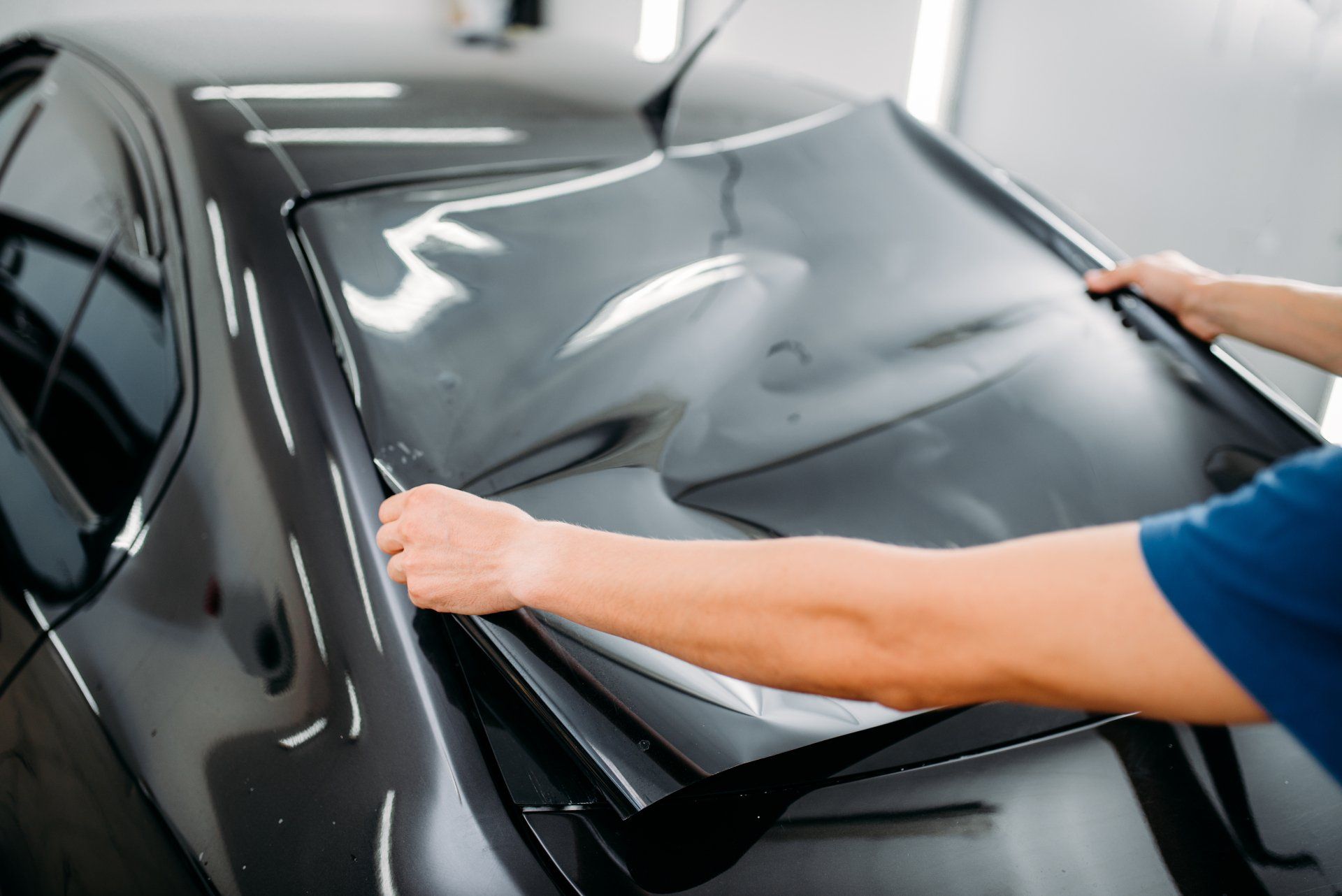The Long-Term Advantages of Window Tinting for Your Car's Value and Comfort
The Long-Term Advantages of Window Tinting for Your Car's Value and Comfort
Blog Article
The Process of Specialist Window Tinting Explained
From choosing the right movie type to the careful preparation of windows, each action plays an important duty in accomplishing a flawless application. Following these preliminary prep work, the careful cutting and application of the film need precision to avoid blemishes.
Choosing the Right Window Movie
The preliminary consideration is the kind of film, which can range from dyed, metalized, to ceramic films (window tinting). Dyed films primarily provide personal privacy and aesthetic enhancement, while metalized films reflect warmth and UV rays, improving power performance.
Next, think about the movie's Visible Light Transmission (VLT) portion, which figures out just how much light enters the area. A lower VLT supplies greater privacy and warm being rejected but may minimize natural light significantly. Additionally, the movie's solar warmth gain coefficient (SHGC) is vital; a reduced SHGC suggests far better thermal performance, assisting to preserve indoor comfort.

Preparing the Windows
When the ideal window film has been selected, the next action is extensively preparing the home windows for installment. This prep work is crucial for achieving optimal bond and making sure a perfect look post-installation.
The first task involves cleansing the windows diligently (window tinting). A top notch glass cleaner is essential, ideally one that is ammonia-free to prevent damaging any type of window seals or color materials. Making use of a lint-free fabric or paper towels, specialists should get rid of any type of dirt, dust, or oil, paying special focus to the edges and edges where debris frequently accumulates

Reducing the Film
A specific technique to reducing the film is necessary for making sure a perfect fit on the ready windows. This action requires both ability and focus to detail, as errors can result in unsightly spaces or overlaps that concession the aesthetic and useful high qualities of the color.
Before reducing, the specialist ought to gauge the window measurements properly, representing any distinct forms or contours. It is suggested to utilize high-grade window movie, as this product has a tendency to be much more flexible throughout the cutting procedure. The movie is commonly laid flat on a clean, smooth surface area, and a sharp utility blade is used to make sure tidy edges.
To attain ideal results, many professionals use design templates developed from previous setups or use software program to design specific patterns. A typical strategy entails including an extra margin to the template, permitting changes during the application stage.
Furthermore, reducing the movie in a controlled atmosphere minimizes the danger of contaminants impacting the glue side. By sticking to these meticulous methods, window tinting professionals can make certain that the film not only fits seamlessly however likewise does effectively over time, enhancing both look and functionality.
Applying the Tint
After carefully reducing the movie to the proper measurements, the following action involves using the tint to the home window surface area. This procedure begins with guaranteeing that the window is clean and without any dust, particles, or deposits that might impact adhesion. A specialized cleansing remedy is typically made use of, adhered to by detailed drying out with a lint-free cloth.
As soon as the surface area is prepared, the installer will very carefully position the color film against the glass. It is necessary to line up the film precisely to stay clear of misplacement, as any type of mistakes can lead to a less than Going Here professional look. To promote this, the installer may make use of a light haze of application solution on the glue side of the film, allowing for mild repositioning if essential.
Utilizing a squeegee, the installer will certainly then start to press the movie onto the glass, working from the facility outwards to get rid of air bubbles and ensure a company bond. This method is crucial, as it ensures a smooth and flawless surface. Throughout the application, attention to information is important to protect against creases or imperfections, making sure that the tint not just enhances aesthetic appeals yet likewise gives the preferred functionality.
Last Assessment and Care
The final examination is an important step in the home window tinting process, making sure that the installation fulfills both aesthetic and practical criteria. During this stage, professionals meticulously take their explanation a look at the installed tint for any kind of imperfections, such as bubbles, folds, or imbalances. An extensive analysis likewise includes inspecting the adherence of the movie to the glass, as well as its uniformity and overall appearance.
After the examination, correct care and upkeep instructions are supplied to the customer. It is vital to inform them about the recommended timeline for cleaning up the tinted windows, normally suggesting a delay of a minimum of thirty days after installment to permit the glue to heal totally. Customers need to be enlightened check on ideal cleansing items and strategies, stressing the evasion of ammonia-based cleaners that can damage the tint.
Additionally, experts must encourage clients on the significance of routine maintenance to prolong the life of the color. This consists of regular checks for indications of wear or damage and responding quickly to any type of issues. By guaranteeing an extensive final evaluation and offering clear care guidelines, home window tinting specialists boost client satisfaction and the long life of their job.
Final Thought
The expert window tinting procedure includes a number of crucial steps that ensure high-quality outcomes. Selecting the appropriate movie type, preparing the windows thoroughly, accurately reducing the film, and applying it with precision are vital for achieving a flawless surface. A detailed final evaluation assurances that all standards are satisfied, while proper post-installation treatment is important for preserving the color's durability and efficiency. Sticking to these treatments inevitably boosts both the aesthetic allure and capability of the tinted windows.
Report this page